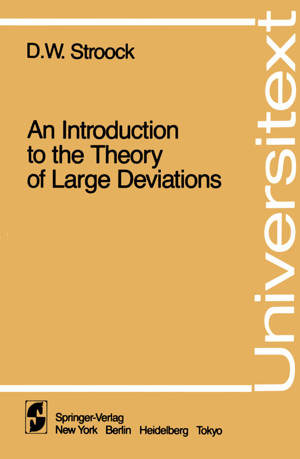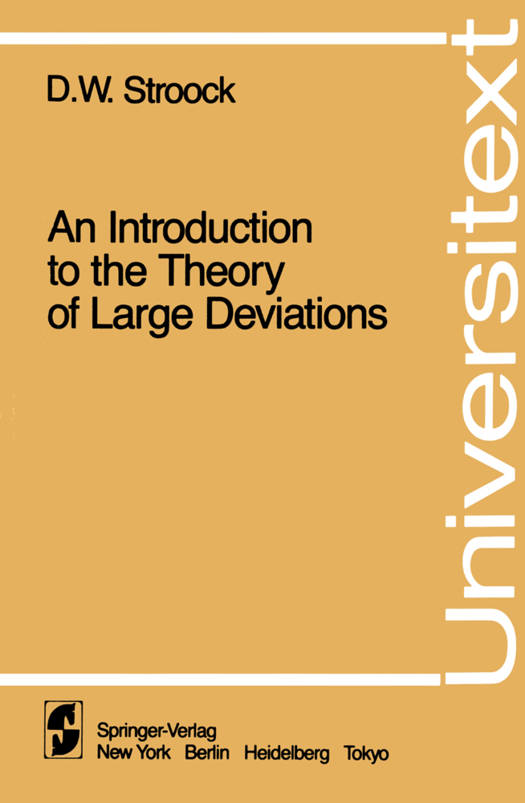
- Afhalen na 1 uur in een winkel met voorraad
- Gratis thuislevering in België vanaf € 30
- Ruim aanbod met 7 miljoen producten
- Afhalen na 1 uur in een winkel met voorraad
- Gratis thuislevering in België vanaf € 30
- Ruim aanbod met 7 miljoen producten
Zoeken
€ 129,95
+ 259 punten
Omschrijving
These notes are based on a course which I gave during the academic year 1983-84 at the University of Colorado. My intention was to provide both my audience as well as myself with an introduction to the theory of 1arie deviations - The organization of sections 1) through 3) owes something to chance and a great deal to the excellent set of notes written by R. Azencott for the course which he gave in 1978 at Saint-Flour (cf. Springer Lecture Notes in Mathematics 774). To be more precise: it is chance that I was around N. Y. U. at the time'when M. Schilder wrote his thesis. and so it may be considered chance that I chose to use his result as a jumping off point; with only minor variations. everything else in these sections is taken from Azencott. In particular. section 3) is little more than a rewrite of his exoposition of the Cramer theory via the ideas of Bahadur and Zabel. Furthermore. the brief treatment which I have given to the Ventsel-Freidlin theory in section 4) is again based on Azencott's ideas. All in all. the biggest difference between his and my exposition of these topics is the language in which we have written. However. another major difference must be mentioned: his bibliography is extensive and constitutes a fine introduction to the available literature. mine shares neither of these attributes. Starting with section 5).
Specificaties
Betrokkenen
- Auteur(s):
- Uitgeverij:
Inhoud
- Aantal bladzijden:
- 196
- Taal:
- Engels
- Reeks:
Eigenschappen
- Productcode (EAN):
- 9780387960210
- Verschijningsdatum:
- 1/08/1984
- Uitvoering:
- Paperback
- Formaat:
- Trade paperback (VS)
- Afmetingen:
- 156 mm x 234 mm
- Gewicht:
- 299 g

Alleen bij Standaard Boekhandel
+ 259 punten op je klantenkaart van Standaard Boekhandel
Beoordelingen
We publiceren alleen reviews die voldoen aan de voorwaarden voor reviews. Bekijk onze voorwaarden voor reviews.











